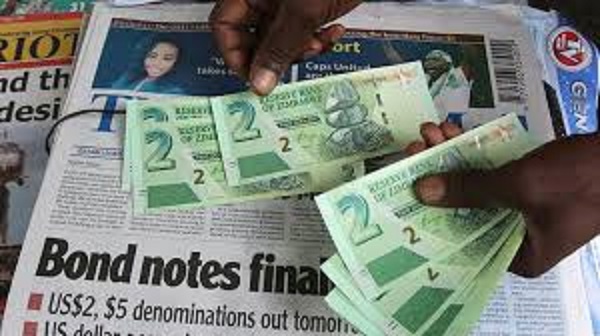Zimbabwe has launched a new currency, but progress was still unofficial.
However, this may not be enough to ease the country’s severe cash shortages.
A month after its introduction, Zimbabwe’s new currency seems to have made little immediate difference to the country’s sustained cash woes.
A free-floating currency, designed to give greater freedom to forex trading, was introduced in February, but with further devaluation and inflationary pressures showing few signs of easing, the monetary measures could risk sinking Zimbabwe deeper into crisis.
The central bank embarked on currency reform in a bid to ease severe cash shortages and stem a liquidity crisis that has fuelled black market foreign currency trading.
Known as the RTGS (Real Time Gross Settlement) dollar, the new tender is made up of bank deposits and bond notes, the surrogate equivalent of the US dollar introduced in 2016 to tackle physical shortages of the greenback.
Since the local dollar crashed in 2009, Zimbabwe has used a host of currencies for everyday transactions, but US dollar flight to neighbouring countries amid Zimbabwe’s economic malaise has led authorities to seek other arrangements.
At a rate of 1:1, the original bond note remained in short supply. The RTGS dollar, initially devalued to 2.5 against the US dollar, is also not widely available.
In theory, the trading of the RTGS dollar should be free, but in Zimbabwe’s banks, trading is severely restricted.
Large exporters with special permits or private foreign currency account holders have access, but ordinary individuals do not.
Instead, the streets remain the easiest source of currency, where black market traders sell at a much higher rate depending on demand.
While imports of fuel, essential medicines, grain and other basic commodities remain choked and inflation continues to rise, the government is confident that the new currency is on the right path.
Finance minister Mthuli Ncube expects a turnaround before the end of the year and hopes the launch of a tradeable currency will restore public confidence in the stuttering economy.
“We are containing the growth of money supply. We’re determined to give value to the currency that we’ve launched and want people to believe in us.
We’re determined to make this right,” he told American radio broadcaster NPR.
However, former finance minister and senior opposition leader Tendai Biti, who describes the RTGS dollar as “rubbish”, told African Business the new currency was bound to fail.
“This RTGS dollar, like the bond note, is a lie to the people. How can the government suddenly devalue people’s savings and imagine a rate of 2.5 that is not backed by anything?
The economic fundamentals for a new currency are simply not there, so this RTGS currency is a waste of time, it will only make things worse. Inflation won’t go down. As we’ve seen before with the bond note it’s best to re-dollarise or join the rand union and forget about this [RTGS],” he said in a telephone interview.
While the Reserve Bank conservatively estimates the RTGS dollar could trade as high as four to the US dollar, Biti predicts trading could reach up to eight.
At the root of this devaluation are Zimbabwe’s deep-rooted economic problems.
Over the past five months, month-on-month inflation has surged to 56.9%. Last October, the government’s announcement of a 2% tax on electronic money transfers contributed to panic about rising prices.
Many shops shut their doors for a week or more to re-adjust their prices. A fuel price hike in January of over 150% led to the worst nationwide protests in two decades and stoked a violent military backlash.
Source




